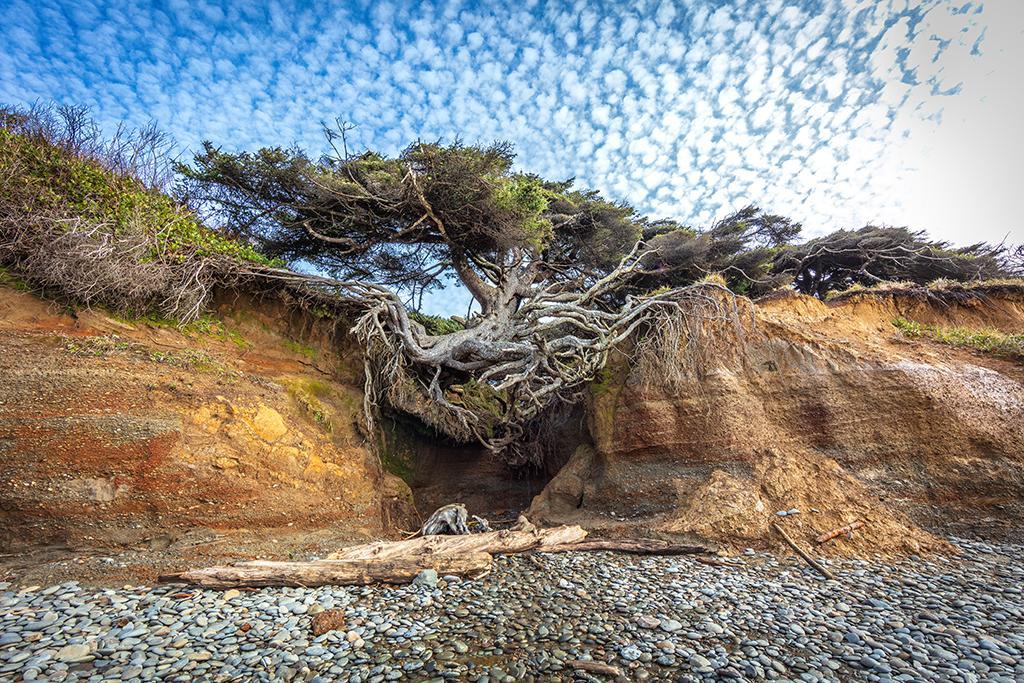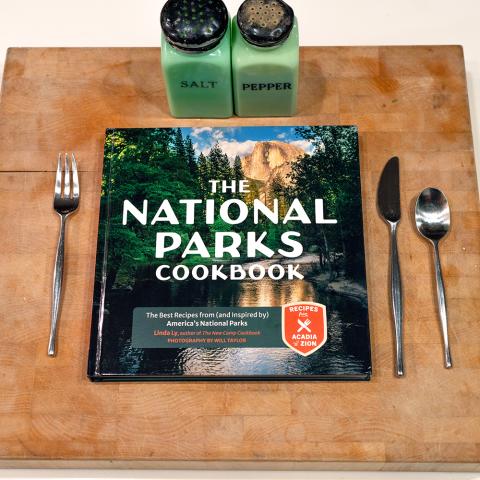
Tree of Life, Olympic National Park, before damage from recent storms / Rebecca Latson
One of the draws to Washington's Olympic National Park is an ancient Sitka spruce known as the Tree of Life that seems to defy gravity, clinging precariously to an eroding seaside bluff on Kalaloch Beach facing the wild Pacific. The magnificent spruce is spread across an open cave of a small cliff, held aloft by its massive, exposed root structure that acts as a bridge, supporting the entire tree. It looks a bit like bonsai tree, albeit one that's 40 feet tall. Recent winter storms, however, have battered the tree and enlarged the cave beneath it. It's still clinging on, but has dropped five feet in recent weeks, according to The News Tribune.
Until the rise of the internet, and the popularity of hiking and camping blogs, the tree sat largely unheralded, other than by locals who knew about it, or beach strollers approaching from a nearby campground. Now it even has its own Yelp page, with a near-perfect 4.9 star rating. "I guess it's a testament to all of us to continue trying and giving our all [for] the sake of living life to the fullest," wrote one contemplative reviewer.
The tree was likely once firmly rooted to the relatively solid ground above the sandy bluff, but, over decades, a small rivulet of water running toward the beach has gradually eroded the ground beneath the tree creating the cave it now stands above. Sitka spruce are notoriously sturdy, tenacious trees, and this one had to be. When a culvert was built above the tree in the 1960s to help supply the nearby campground with water, it ended up creating a path for water to flow toward the tree, slowly digging the tiny canyon the tree now sits astride. National Park Service efforts to stabilize the coastal bluffs at Kalaloch ended up furthering erosion around the tree. Still, the roots held, the tree continued to grow, and, defying the odds, the tree stubbornly remained.
Until recently there was room enough room below the tree for people to stand beneath it, and a small pool that sits silently beneath the snaking complex of roots above. People would duck under the roots for a photo, peer up through the interlocking latticework of roots at the sky above, and marvel at this fierce, old tree, clinging to life.
Over the past month, storm surge has washed into the cave below the tree, and powerful runoff from above has scoured away at the back of the cave. Faced with erosion from multiple angles, the tree has slumped down to nearly the bottom of the cave, its roots straining to support its weight. Though, according to a local photographer, tides have washed logs into the cave, and the base of the tree is resting on them, providing a much-needed respite from gravity. A little support in a time of change throughout Olympic National Park, as the tides encroach ever higher, the glaciers recede ever further, and the climate continues warming, altering everything.
At some point, the Tree of Life will eventually give up holding on, the roots no longer able to handle the strain, and it will succumb to the gravity that's been tugging at the tree for decades. It may happen with a crash, in front of dozens of beachgoers there to see the tree while they still can. It may happen in the dead of night, startling birds snoozing in the underbrush. It may happen slowly, the roots sagging and sagging until the tree gracefully lies on its side, taking a final deserved rest.
The National Park Service, for its part, has no plans to prop up the tree of life. "We’ll let what passes for nature take its course," Olympic National Park's Janet Cole told the Seattle Met.
The Quinault tribe's reservation is nearby, and in their native language, Kalaloch means "a good place to land." A fitting name for the seed that one day long ago sprouted into the Tree of Life.
Should you like to visit the tree while it still stands, or rather, holds, it's just west of the Kalaloch campground right off US 101. There's an old lodge nearby, the Kalaloch Lodge, just south.




 Support Essential Coverage of Essential Places
Support Essential Coverage of Essential Places






